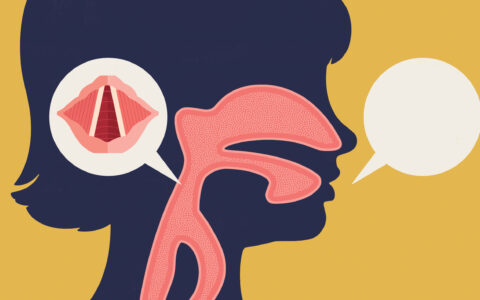Up to six percent of children have obstructive sleep apnea (OSA). Affected children and teens often get up multiple times in the night, move from room to room, and can leave dishevelment in their wake. They may slog through a day or develop hyperactivity to counter fatigue. Teachers, parents and other family members are affected by the child’s abnormal sleep patterns.
For most children, tonsillectomy and adenoidectomy (T&A) is the first—and final—step. T&A is effective in curing OSA in 90 percent of healthy children. However, this rate drops to 12 percent in children who are obese.
In Tennessee, which had the highest childhood obesity rate in the country in 2018, many children and teens for whom T&A has ultimately failed are referred to Vanderbilt University Medical Center for comprehensive evaluation. Amy Whigham, M.D., pediatric otolaryngologist at Monroe Carell Jr. Children’s Hospital at Vanderbilt, works with surgeons, sleep medicine specialists and weight management providers to unravel causes and offer treatment options.
A team approach is critical, says Whigham. “The etiology is often complex, and treatment varies greatly with the severity of the OSA, patients’ preferences or compliance, and their family situation.”
OSA Evaluation and Treatment
Children with craniofacial abnormalities like those associated with Goldenhar, Pierre Robin Sequence and Down’s Syndrome are most prone to develop OSA. Obesity, however is the single largest predictor of the condition, with some studies finding up to 22 percent of obese children have OSA. With increased weight comes attendant bulkiness in the neck and soft tissues of the throat and abdomen, raising the risk for OSA. These thickened tissues fall into the airway during sleep, leading to increased airway collapse and a smaller lumen.
At Vanderbilt, pediatric patients presenting with refractory OSA symptoms are first evaluated with a sleep study to determine and measure hypopneas, apneas, hypoxemia, arousals and/or limb movements.
With the T&A option already exhausted, the next line of treatment is often medications that reduce inflammation (typically montelukast and a nasal steroid). If medication fails, CPAP can be an effective option, though compliance is challenging. Said Whigham, “Less than 50 percent of adults who have CPAP equipment are compliant, and this number is even smaller in children.”
When CPAP is not a viable option, patients can undergo a multi-level airway surgery. Through drug-induced sleep endoscopy, Whigham typically addresses two to four sites under the same general anesthetic, including revision adenoidectomy, turbinate reduction, palatal resection or reorientation procedures, lingual tonsillectomy, epiglottopexy, supraglottaplasty or midline posterior glossectomy.
Obesity’s Sequelae
The overwhelming majority of patients Whigham treats struggle with obesity, which increases the likelihood of both severe sleep apnea and postoperative respiratory complications.
Patient care extends beyond medical intervention to encompass psychological factors and the family’s commitment to lifestyle changes. “At our clinic, we don’t just put people on diets. Our weight management specialist uses motivational interviewing to determine if the patient and family would benefit from making a plan together that includes more physical activity or healthy meal choices,” Whigham said.
Whigham is also interested in the connection between obesity, OSA and inflammation. Currently, she is enrolling patients for a study investigating the link between inflammation and the likelihood of T&A failure. “Does more systemic inflammation make surgery less likely to be curative because of the prevalence of other inflamed tissues in the airway?” she asks. “Montelukast targets one inflammatory pathway. We may need other medications that target other pathways to improve our success rate and decrease the risk of multiple surgeries.”
What is well-understood is that refractory OSA in children tracks with obesity and that inflammation plays a role in both. Disassembling cause and effect in this association may contribute to new therapies that help with both morbidities.




